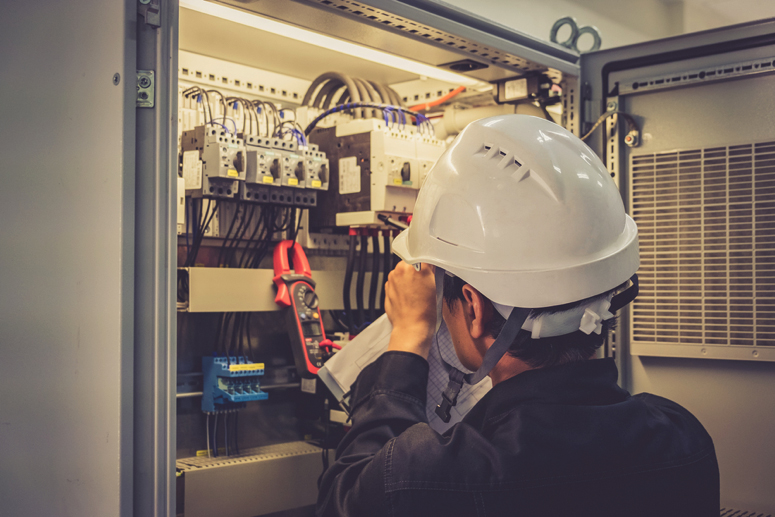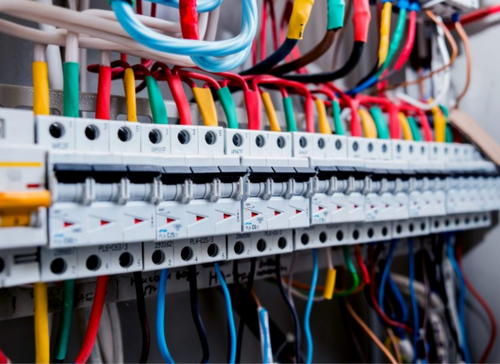Advanced BRE Automation Australia: Changing Your Automation Demands
Advanced BRE Automation Australia: Changing Your Automation Demands
Blog Article
The Ultimate Overview to Electric Installment: Tips and Strategies for a Safe and Effective Home Wiring System
In the realm of home maintenance, couple of elements are as crucial yet often neglected as the electric circuitry system. Ensuring a risk-free and effective home circuitry arrangement demands not only a basic understanding of electrical principles however also practical expertise of installment strategies and maintenance methods. From browsing the details of cord connections to troubleshooting usual concerns that might occur, this guide aims to equip homeowners with the necessary pointers and devices necessary for a safe and energy-efficient electric system. By checking out the subtleties of electrical security steps and energy-saving techniques, this thorough overview will clarify the ins and outs of home circuitry, encouraging individuals to take cost of their household's electrical infrastructure.
Comprehending Electric Safety Steps
To make sure the safety of both people and property, understanding and applying proper electric safety procedures is paramount in any kind of home circuitry task. Electricity is a powerful pressure that can be hazardous if not handled with caution. One of the fundamental precaution is guaranteeing that all electric job is executed by qualified experts who comply with regional building regulations and guidelines. It is essential to conduct a detailed evaluation of the electrical system prior to beginning any electrical wiring task to determine possible hazards or issues that need to be resolved.
Furthermore, utilizing the ideal tools and devices is important for preserving security during electric setups. Shielded gloves, voltage testers, and safety eyeglasses are some of the standard safety gear that ought to be worn to stop electrical shocks or accidents. It is likewise vital to de-energize circuits before dealing with them and to label all circuits and breakers plainly to prevent confusion.

Crucial Tools for Home Electrical Wiring
Making sure the proper implementation of electric precaution in home wiring jobs entails utilizing a specific set of important tools designed to help with the setup procedure successfully and safely. A few of the secret tools required for home circuitry projects include a voltage tester for examining online cables, cord strippers for getting rid of insulation from cords, a cable cutter for precisely reducing wires to length, a screwdriver set for securing electrical components, electrical tape for insulation and protecting links, a cable ripper for stripping cable sheathing, and a multimeter for gauging voltage, existing, and resistance. In addition, a drill with bits is essential for developing openings for electrical wiring and mounting electrical boxes, while fish tapes or poles help in drawing wires through conduits or wall surfaces. It is crucial to invest in top quality devices to guarantee precision, performance, and safety during home circuitry projects. By having the required tools conveniently available, house owners can effectively browse the installation process and maintain a safe electrical system within their homes - BRE Services.
Step-by-Step Electric Setup Guide
Starting an electrical installation project requires careful planning and adherence to safety and security standards. Before beginning any work, ensure you have a comprehensive plan laying out the format of the electric system, including the positioning of electrical outlets, switches, and fixtures. Take right into account the power needs of each device to identify the suitable cord gauge and circuit breaker sizes.
The initial step in the installation procedure is to close off the power supply to the area where you will be working. Utilize a voltage tester to verify that the circuits are de-energized before touching any type of cables. Next off, thoroughly get rid of existing components or outlets and separate the cords.
When installing brand-new wiring, run cables with walls and ceilings, securing them in location with suitable installations. Follow regional building regulations and manufacturer directions for proper cord installment and connections. BRE Electrical Solutions. Make certain to label cables for very easy identification and future upkeep

Troubleshooting Common Circuitry Issues
Having finished the installation process as detailed in the previous subtopic, fixing typical electrical wiring issues is an important ability for guaranteeing the safety and security and functionality of your electric system. One typical concern is a tripped circuit breaker, often caused by overloaded circuits or a short circuit. To fix this, find the breaker panel, identify the tripped breaker by trying to find the one not fully in the "on" position, and reset it by turning it completely to "off" and then back to "on." One more prevalent trouble is a defective electrical outlet, identified by no power or recurring power supply. Ensure the electrical outlet is not regulated by a switch, then make use of a voltage tester to look for power. If there is no power, switch off the circuit, inspect the wiring connections for any kind of loose or broken cords, and replace the outlet if needed. Constantly flickering lights can show loose circuitry links or an overloaded circuit. To address this, check and tighten all cable connections in the influenced components and switches and redistribute the lots on the circuit to stabilize the electric need. Frequently examining and promptly addressing these common circuitry concerns will preserve the safety and security and effectiveness of your home electrical system.
Tips for Energy-saving Electrical Systems
For ideal power effectiveness in electrical systems, applying clever methods and making use of energy-saving modern technologies is vital. One essential pointer for achieving an energy-efficient electrical system is to update to LED lighting. LED light bulbs eat considerably less power than typical incandescent bulbs and have a longer life-span, making them a cost-efficient option in the long run. In addition, setting up programmable thermostats can help manage home heating and cooling down systems, reducing power waste when no person is home. One more approach is to invest in energy-efficient devices that are ENERGY STAR accredited, ensuring they satisfy high requirements for power effectiveness. Proper insulation and sealing of home windows, doors, and electric outlets can likewise avoid power loss, inevitably reducing the workload on electrical systems. Lastly, consider including sustainable power sources like photovoltaic panels to additional decrease reliance on standard power grids. By integrating these energy-efficient pointers and modern technologies, property owners can not only conserve money on their electricity bills yet likewise minimize their environmental impact.
Verdict
Finally, executing appropriate safety and security procedures, using necessary tools, following a step-by-step setup overview, troubleshooting usual problems, and integrating energy-efficient suggestions are critical for a safe and reliable home electrical wiring system. By adhering to these methods, property owners can guarantee the long life and performance of their electric installations. It is very important to prioritize safety and security and efficiency when it involves electrical operate in order to stop possible risks and to keep a reputable electric system in the home.
Report this page